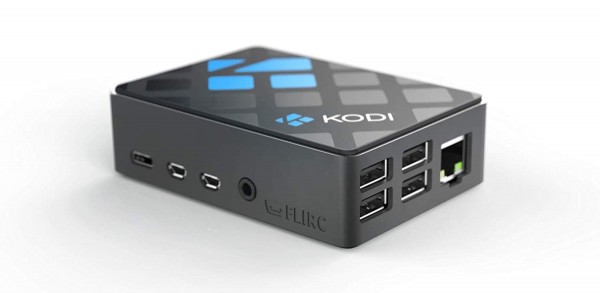

If you want to use accessories like camera modules or with your Pi, then try to find a case with extra cable room. GPIO/Module Access: All of the Pi cases listed in this article provide easy access to the GPIO and module pins, but some give a bit of extra wiggle room for cables.Aluminum cases with fans and heat-sinks are the coolest option, but most people can get away with the bare minimum, like a case with one fan or decent ventilation. Heat Dissipation: If you plan to use your Pi 4 for intensive actives or extended periods, then you should probably get a nice, cool case.Here are some of the features that you might need in a Pi 4 case: So before shopping for a Pi case, you should stop and think of what you need. Some cases are meant for everyday applications, but others are made specifically for smarthome setups, entertainment centers, or intensive applications (which can generate a lot of heat). Want a powerful media center? Set it up on a Raspberry Pi.īut all this flexibility can make it hard to find a good Raspberry Pi case. Need a smart mirror? You can build one with a Pi. Raspberry Pis can be used to accomplish just about anything. Here are some great cases that can keep your Pi 4 cool and dust-free in any situation. Thanks for confirming this! I ordered one myself but it hasn't arrived yet.Don’t run your Pi 4 without a case. There are multiple cables on the linked page, which differ mainly in how their connectors are oriented, but they all have the same narrow connectors. I got a reply from Flirc which reassured me that these cables really do fit, so I bought one, and it does. I have left a message about this on the Flirc site, and will post their response in due course. I am not really inclined to buy a cable 'on spec' without more reason to think it really is different. seem to stick out as much as) those on the cables I have, and the specs do not include connector width. The connectors on all the ones which have images look like (i.e. I now see the FAQ entry, but the link points to a page with a table with multiple cables listed. I haven't tried it myself, if you do please let us know if it fits. There's a FAQ on the Flirc RPi 4 case page where question 9 specifically adresses the gpio ribbon cable issue: I haven't seen anything like this available. For a connector to work with the Flirc case, I think that it would need to be moulded on to the wire, with little or no overlap at the ends. Almost any 'filing down' will damage or destroy these clips, and the connector will then come apart and lose contact with the cable wires with minimal disturbance. The connectors I used then, and the ones that seem to have been used on the commercial ribbon cables I have now, come in two parts which are clamped together over the cable and held together by clips on both ends of the connector. I used to make my own ribbon hookups for IDE drives, since this allowed me to use the exact length of cable that fitted best for a given case/motherboard/drive location combination - improving both access and cooling. You'll probably need to file it down to 52mm in order to have the cable fit to narrowest top part of the pillars, but this is not recommended as it will surely weaken the connector. Well checking again the ribbon pin1-to-pin40 distance is about 51mm (again you may correct me on this) It may be a "stupid idea" but have you tried filing the sides of the ribbon connectors to reduce the overall length? In my measurement, the 40-pin ribbon connector's length is about 55.5mm (correct me on this), while the pillar to pillar widest distance is 53mm so definitely a 40-pin ribbon connector's 55.5mm will not fit. I confirm this on the RPi3B+ version of the FLIRC case (just took mine from storage to verify pfletch101's concern)


 0 kommentar(er)
0 kommentar(er)
